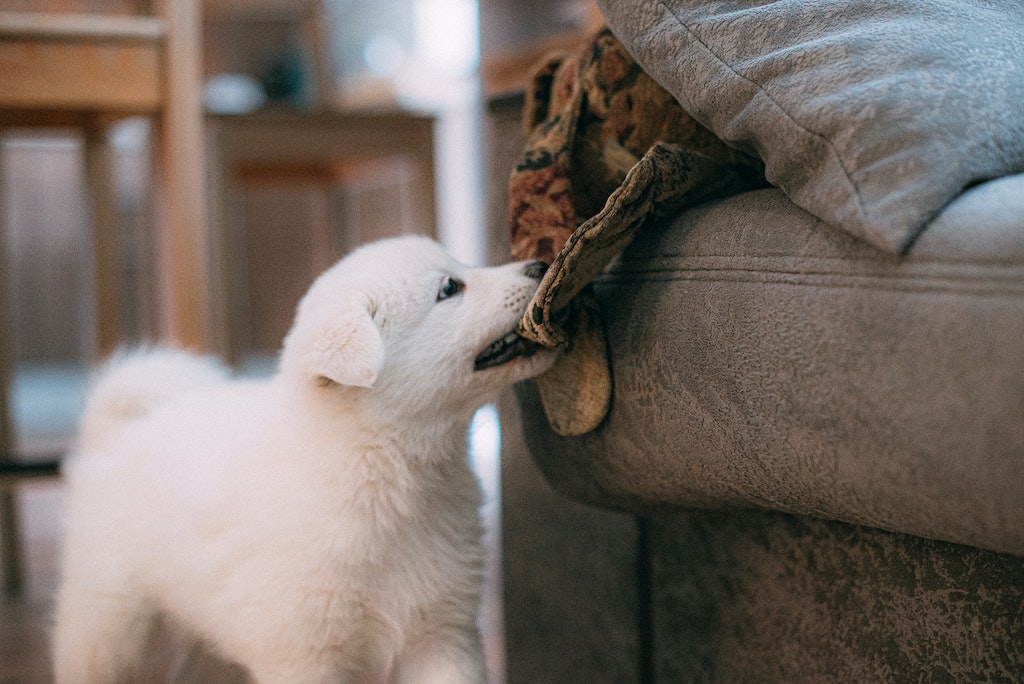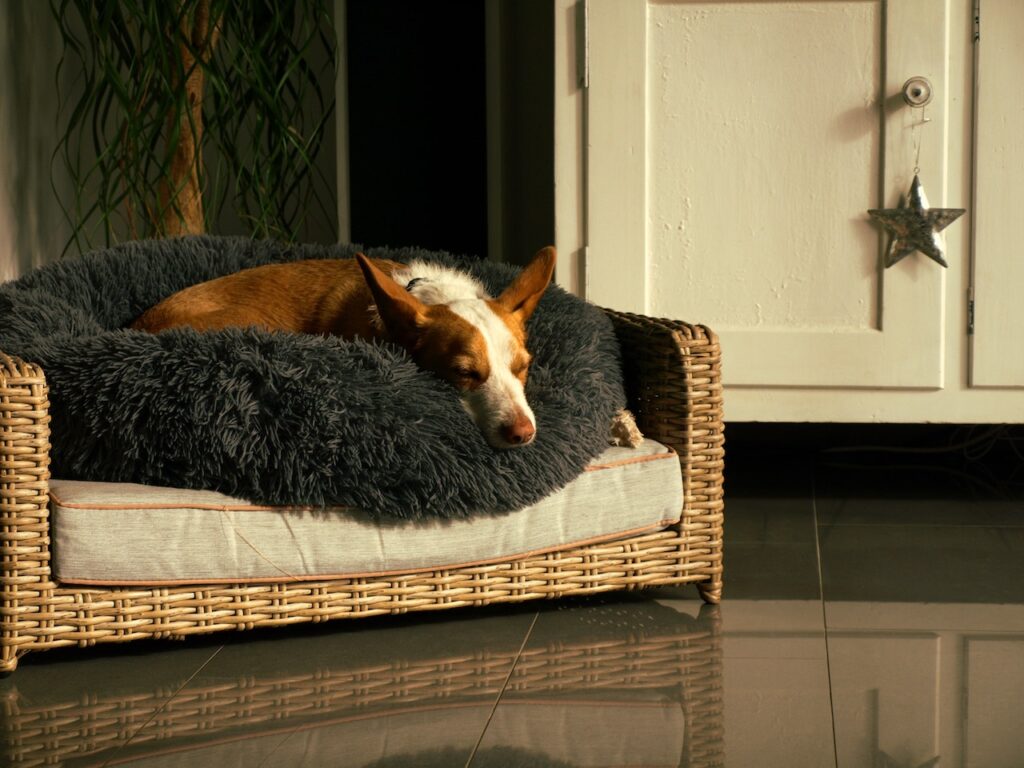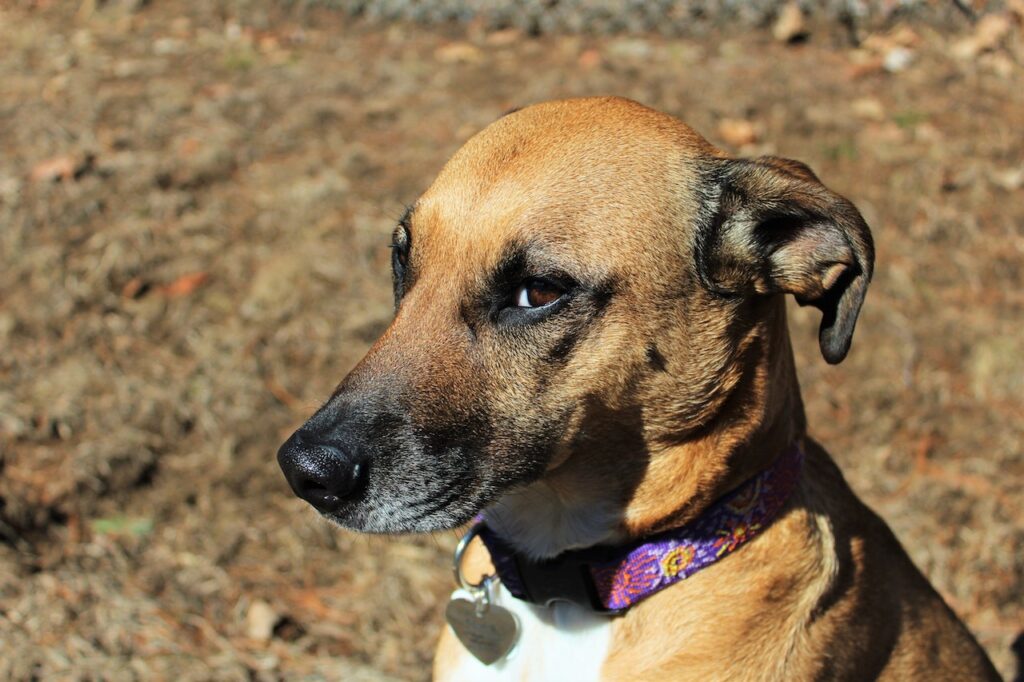A guide to stopping a puppy chewing, biting and nipping
Welcoming a new puppy into your home is an exciting and joyful experience. However, along with their adorable antics, puppies often exhibit natural behaviours such as biting and chewing. While this behaviour is a normal part of their development, it’s crucial to guide them towards appropriate outlets for their chewing needs. To address the issue effectively you have to understand the root causes, it’s essential to understand why puppies bite and chew. Puppies nip and chew for a variety of reasons and it’s important to remember that it is a normal part of their development and exploration. Some common reasons they exhibit this behaviour includes teething, exploration, and excess energy. By recognising these underlying causes, you can tailor your approach to combating the problem accordingly.
In this blog post, we’ll explore the root causes and look at effective strategies to help you curb your puppy’s biting and chewing habits. We also take a closer look a the different types of chew toys and natural chew sticks available in the marketplace. Plus we link to products that are relevant and useful in the combating and helping to redirect your puppy from nipping on your hands and furniture to more appropriate toys or training aids!
Why do puppies nip, mouth, bite and chew?
Teething in puppies
One big reason a puppy bites and chews is like human babies they go through a teething process. The discomfort of teething can make them chew on objects to relieve their sore gums. It helps to soothe their discomfort and allows their new teeth to break through.
Teething refers to the process of a puppy’s baby teeth (also known as deciduous teeth) being replaced by their permanent adult teeth. Puppies go through a teething phase as they grow and develop. This usually begins around three to four months of age and continues until they are around six to eight months old, although the timing can vary between individual puppies.
The teething process
During teething, a puppy’s baby teeth become loose and eventually fall out to make way for their adult teeth. This process can cause discomfort and irritability in puppies, leading them to seek relief through chewing and biting. The new adult teeth gradually emerge from the gums to replace the baby teeth.
Teething can be a challenging time for both puppies and their owners, as puppies may exhibit increased chewing behaviour and may be more prone to mouthing or biting. Their gums may be sore and sensitive, and they may try to alleviate the discomfort by chewing on various objects. It’s important to provide appropriate chew toys and guidance during this phase to redirect their chewing and protect your belongings from damage.
A temporary phase!
It’s worth noting that teething is a thankfully a temporary phase and most puppies will outgrow this behaviour as their adult teeth fully emerge. However, it is crucial to manage the teething process appropriately to ensure your puppy’s comfort and help them develop good chewing habits.
Exploration and play
Puppies use their mouths to explore the world around them. They learn about their environment by sniffing, licking and chewing objects. It’s their way of understanding different textures, tastes, and sensations
Natural instincts
Dogs are descendants of wolves and their instinctual behaviours can still be present in domesticated puppies. Chewing is an innate behaviour that serves various purposes, such as hunting, cleaning their teeth and exercising their jaw muscles.
Excess energy
Puppies have lots of energy and chewing provides them with a way to release it. It can be a form of entertainment and mental stimulation. Regular exercise and playtime can help redirect their energy and minimise excessive chewing. We take look at appropriate levels of activity for puppies in another article click here to have a read.
How to manage and redirect the biting and chewing behaviour of a puppy
Provide Appropriate Chew Toys
Invest in a selection of safe and durable chew toys designed specifically for puppies. Look for toys made from sturdy materials that won’t easily break or pose a choking hazard. Encourage your puppy to chew on these toys by making them readily available and praising them when they engage with them.
Offer a variety of safe and durable chew toys specifically designed for puppies. This will redirect their chewing behaviour onto appropriate items and help soothe their teething discomfort.
Redirect and Distract
When you catch your puppy biting or chewing on inappropriate objects, swiftly redirect their attention to an approved chew toy. Offer the toy with enthusiasm and encourage them to chew on it instead. Consistency is key here, as repeated redirection will reinforce the desired behaviour.
Positive Reinforcement
Positive reinforcement is a powerful tool in training puppies. Whenever your puppy chooses to chew on their designated toys, shower them with praise, gentle pets, or even small treats. This positive association will help them understand what behaviour is acceptable and reinforce their inclination to chew on appropriate items.
Establish Boundaries
Teach your puppy boundaries by setting clear limits on what they can and cannot chew. Use baby gates or playpens to restrict access to certain areas of the house initially, gradually expanding their freedom as they demonstrate improved chewing behaviour. This approach allows them to learn gradually while minimizing potential damage.
Proper Exercise and Stimulation
A tired puppy is less likely to engage in destructive chewing. Ensure your puppy receives plenty of physical exercise and mental stimulation through interactive play sessions, walks, and puzzle toys. Engaging their minds and bodies will help redirect their energy and reduce the urge to chew on inappropriate items.
Socialisation and Bite Inhibition
Proper socialisation is crucial for puppies to learn bite inhibition. Encourage controlled interactions with other puppies or well-behaved adult dogs, as they will help teach your puppy the appropriate level of bite pressure during play. If your puppy bites too hard during play, yelp in a high-pitched tone to imitate a puppy’s yelp, signalling that the bite was too rough. This mimics natural dog behaviour and helps them learn to be more gentle.
Consistency and Patience
Changing a puppy’s behaviour takes time and consistency. Be patient and avoid punishment, as it can lead to fear and anxiety. Instead, focus on positive reinforcement and redirecting their chewing behaviour. Consistency in training will yield better results over time.
The importance of buying the right chew toy for your puppy
When buying a puppy teething chew toy, there are several important factors to consider to ensure you choose the right toy for your puppy friend. Here are some key aspects to factor in:
Safety
Safety should always be the top priority when selecting a chew toy for your puppy. Look for toys made from non-toxic materials that are free from any small parts or components that could be easily chewed off and swallowed. Avoid toys with sharp edges or pieces that could potentially harm your puppy.
Durability
Puppies have strong chewing instincts, especially during the teething phase. Choose a chew toy that is durable and can withstand vigorous chewing without easily breaking apart. Opt for toys made from sturdy materials such as rubber, nylon or hard plastic. Reinforced seams and strong construction can also contribute to the toy’s durability.
Size and Texture
Consider the size and texture of the chew toy in relation to your puppy’s age, breed and size. Choose a toy that is appropriate for your puppy’s mouth size, allowing them to chew comfortably without the risk of choking. Puppies may prefer toys with different textures to soothe their teething discomfort, such as toys with ridges, bumps, or softer surfaces.
Teething Relief
Look for chew toys specifically designed to provide teething relief. Some toys may have grooves or ridges that help massage the gums and alleviate discomfort during the teething process. Others may be filled with water or can be frozen to provide a soothing sensation to your puppy’s gums.
Interactive and Engaging
Choose a chew toy that can keep your puppy entertained and mentally stimulated. Toys with added features like treat compartments or puzzle elements can engage your puppy’s curiosity and provide additional stimulation while chewing. Interactive toys can also help redirect your puppy’s chewing behavior away from inappropriate items.
Easy to Clean
Puppies can make a mess and their chew toys are no exception. Opt for chew toys that are easy to clean and maintain hygiene. Look for toys that can be easily washed or are dishwasher-safe to ensure your puppy’s chew toy stays clean and free from bacteria buildup.
Breed and Age Considerations
Different dog breeds may have varying chewing preferences and strengths. Consider your puppy’s breed characteristics when selecting a chew toy. Additionally, puppies go through different stages of teething, so choose toys suitable for their current stage. Some toys are specifically labeled for puppies or for specific age ranges to assist in selecting the appropriate option.
By considering these factors, you can choose a puppy teething chew toy that is safe, durable, and enjoyable for your furry friend. Remember to supervise your puppy while they chew and always replace damaged or worn-out toys to ensure their safety and satisfaction.
Multi Pack | A multi pack of chew toys 10 or 18 toys. Suitable for small and medium sized puppies and dogs. Good value multi pack, cotton is 100% natural and washable. Toys are non toxic but must be used under supervision as not indestructable |
Durable | Tough / indestructible squeaky dog chew. Made of tough non-toxic natural rubber. This puppy chew toy has raised bumps on the surface which allows your puppy to clean it's teeth. |
Squeaky | Carrot shaped puppy / dog chew toy. Made from durable natural rubber. This product comes in two colour options and has a milk flavour, the leaves are crinkley and the carrot squeaks to keep your pup engaged |
What are 'Natural' teething chew sticks and toys for puppies ?
When a chew toy is labelled as “natural” it means that the materials used to make the toy are derived from natural sources rather than synthetic or artificial materials. Natural chew toys are typically made from substances like wood, natural rubber, cotton or animal by-products. These toys are designed to be safe for dogs to chew on and are often free from harmful chemicals or additives.
It’s important to note that while natural chew toys are generally considered safe, it’s still crucial to supervise your dog while they chew and regularly inspect the toys for any signs of wear or damage. Additionally, every dog is unique, and what works well for one may not work for another, so it’s essential to choose chew toys that are appropriate for your dog’s size, age, and chewing strength.
Overall, natural chew toys provide a safer and more environmentally friendly option for dogs to satisfy their natural chewing instincts and promote dental health. There are several options available that can provide safe and soothing relief for their sore gums. Here are some natural chew toy choices to consider:
Himalayan Dog Chews
Himalayan dog chews are made from hardened yak or cow milk. They are natural, long-lasting and provide a challenging chew for puppies. These chews soften with chewing, making them safe and digestible. Ensure you choose the appropriate size for your puppy and monitor their chewing.
Natural Fibre Rope Toys
Rope toys made from natural fibres such as cotton or hemp, can be great teething options for puppies. They are durable, provide a different texture for chewing, and can help clean their teeth. However, be cautious with rope toys and supervise your puppy to prevent them from ingesting any loose threads.
Deer Antlers
Deer antlers are a natural and durable chew option for puppies. They are rich in minerals and don’t splinter like some other types of bones. However, it’s essential to choose split antlers appropriate for puppies, as larger or harder antlers may be too challenging for them to chew.
Root Chews
Root chews, such as those made from the roots of trees like the Arbutus or Olive tree, are a natural and sustainable option for puppies. These chews are safe, free from additives, and can help satisfy a puppy’s chewing needs.
Remember, every puppy is different, and it may take some trial and error to find the perfect natural chew toy that your puppy enjoys. Please also supervise your puppy while they chew on any type of chew stick or toy to ensure their safety. Discard any small or broken pieces to prevent choking hazards. It’s essential to choose chew sticks appropriate for your puppy’s age, size and chewing strength.
By providing natural chew sticks for teething puppies, you can help alleviate their discomfort, keep them occupied, and protect your furniture and belongings from their teething urges.
Antler Horn | Natural Split Antler Horn Chew 100% Natural / Hypo-Allergenic. Three sizes available small, medium and large. These antlers are crueltry free and are gathered from the Scottish Highlands from deer that have shed their horns. |
Coffee Wood | Novapets Coffee Wood Chew Stick Available in packs of 2 in various sizes. 100% natural and preservative free. Handmade from coffee wood, can be used a teething stick, dog toy, an interactive training aid and enrichment toy. |
Himalayan | The Regal Mutt Himalayan Chew Bag of 5 chews 100% Natural / Gluten Free. Two pack sizes avaiable. Ingredients are Milk Cottage Cheese and salt (less than 0.01%). Rich in protein and calcium. 100% Organic. |
Addressing a puppy’s biting and chewing habits requires understanding, patience and consistent training. By providing appropriate chew toys, redirecting their attention, and offering positive reinforcement, you can guide your puppy toward more desirable chewing behaviours. Remember to provide the right amounts of exercise, mental stimulation, and socialisation opportunities. With time and dedication, you can help your puppy develop into a well-behaved, non-destructive adult dog.










